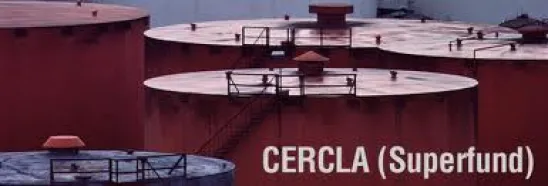ASTM International recently published a Standard Guide for Identifying and Complying with Continuing Obligations, ASTM E 2790-11 (Guide). This Guide offers a comprehensive approach to assist property owners (and other users such as tenants/operators, as may be appropriate) with maintaining important environmental liability protections. The Guide fills a critical gap by providing practical guidance to implement statutory liability protections to promote the redevelopment of Brownfields and other under-utilized properties. This Guide was developed by representatives of various industrial, lending, consulting, and governmental entities and provides a uniform procedure to better understand the ongoing obligations and risks associated with environmentally challenged properties. The Guide generally outlines a suggested procedure to evaluate potential environmental impacts, identify the continuing obligations that may flow from these environmental impacts consistent with legal obligations, and implement such continuing obligations.
The Guide was written to assist those who are seeking to maintain the bona fide prospective purchaser (BFPP), the innocent landowner (ILO), and the contiguous property owner (CPO) liability protections under the Comprehensive Environmental Response, Compensation and Liability Act (CERCLA). This Guide is also potentially useful to establish similar defenses from any applicable state statutory liability scheme that is modeled after CERCLA. Passed as part of the 2002 Brownfields Amendments, the liability protections are designed to strike a balance between the competing public interests of requiring cleanup and encouraging prospective owners to purchase and redevelop environmentally distressed properties including Brownfields. After finding that CERCLA’s existing liability regime tended to chill redevelopment of impacted properties, the 2002 Brownfields Amendments attempted to encourage redevelopment of distressed properties by adding key protections from CERCLA’s infamous “strict liability” regime for qualified persons.
In creating the BFPP and CPO exemptions, and in amending the existing ILO defense, Congress created a series of elements required to qualify and maintain each respective liability protection See 42 U.S.C.§§ 9601(40) and 9607(r) (BFPP), 42 U.S.C. §§ 9601(35)(a)(iii) and 9601(35)(b)(i)(ii), (ILO), and 42 U.S.C. §9601(q) (CPO). Many of these requirements have been considered by stakeholders to be confusing and difficult to implement with certainty. For example, each of the liability protections require some variation of “reasonable steps” to stop continuing releases; prevent any future threatened releases, and prevent or limit human, environmental, or natural resource exposure to any previously released hazardous substance. The obligations for each liability protection varies slightly, and other obligations apply as appropriate, depending on which liability protection a person is seeking to qualify for and maintain.
The Guide presents a four-step approach to identify and comply with continuing obligations under CERCLA. In addition, the Guide proposes some options to help document efforts to meet the elements of the liability protections, at the user’s option.
The first step involves a detailed review of the Phase I Environmental Site Assessment or All Appropriate Inquiry report for the property, and any other actual knowledge of the presence of hazardous substances at the property. Where a user has actual knowledge of environmental impacts, or where there is reason to know of potential environmental impacts at the property, Step 2 focuses attention on these environmental impacts. The Step 2 analysis also suggests a detailed review of available information relating to any cleanup activities that may have occurred in the past. Such information will inform the user what continuing obligations to implement, if any.
Where environmental impacts are confirmed, Step 3 suggests methods to identify and implement “initial” continuing obligations, which are those steps taken to meet the statutory elements of the liability protection. For example, initial continuing obligations might include removing leaking drums from a property, or installing an engineered barrier. Property-specific circumstances will determine the type and number of initial continuing obligations that may be appropriate.
Step 4 suggests methods to identify and implement “ongoing” continuing obligations, which are those actions taken either continuously or intermittently from time to time to maintain compliance with the statutory elements. Such requirements may include inspecting the property to evaluate compliance with land use restrictions, or evaluating the land use to ensure that changes in property use do not result in unacceptable risks of exposure to hazardous substances.
The Guide notes that compliance with continuing obligations is necessarily property-specific since the environmental conditions and potential impacts at any given property are unique. As a result, the Guide develops a suggested procedure for evaluating and implementing continuing obligations, but does not mandate any specific action. In addition, the Guide strives to allow the procedure used to be commensurate with the circumstances encountered in the field. Therefore, simple solutions can be implemented to address simple situations.
Furthermore, the Guide notes that property owners (and tenant/operators) seeking to maintain these liability exemptions should consult experienced environmental counsel where appropriate, because much of the law is not settled, and many of the legal issues associated with identifying and implementing continuing obligations continue to evolve. In addition, each of the liability exemptions requires compliance with slightly different legal requirements, and experienced counsel may be helpful for those seeking to fully preserve all legal rights and defenses.







 />i
/>i
